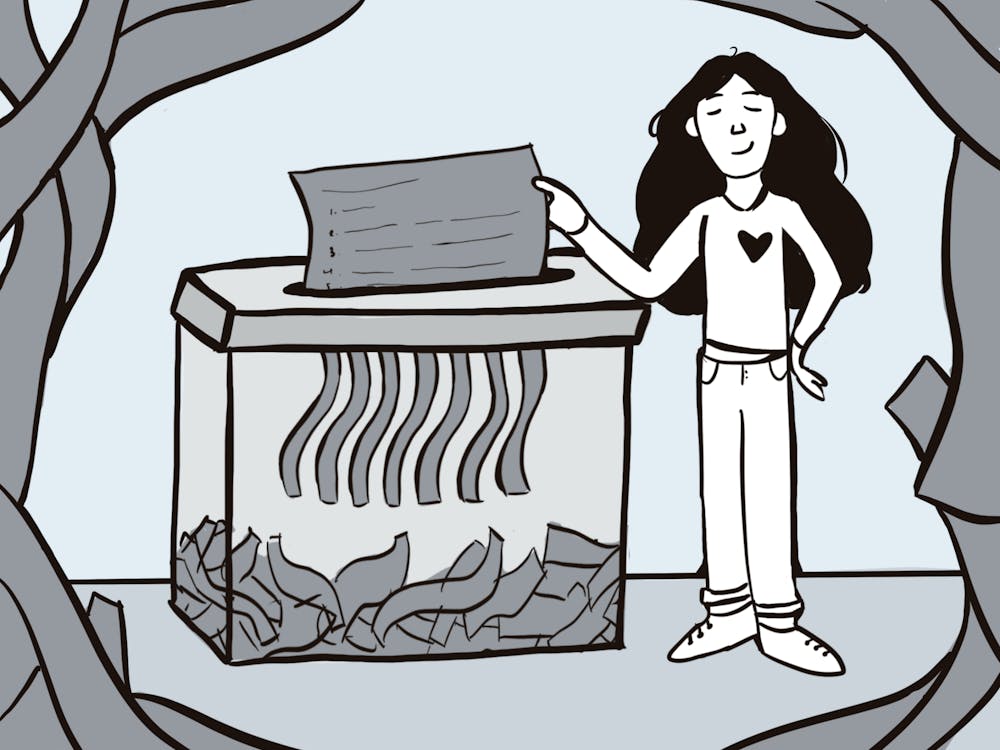
Earlier this summer, news of Starbucks’ decision to eliminate plastic straws sparked celebratory progressive cries, cynicism about banning a little piece of plastic and a healthy number of memes. Internet buzz aside, are our straws truly endangered? They’re on the decline, but the wave of progress isn’t as rapid as it may seem.
As with most policies aimed at “banning” things, Starbucks’ straw-free announcement generated a big hype around change that’s actually a couple years away. Rather than immediately wiping its stock clean, Starbucks plans on phasing out plastic straws in its stores by 2020.
Straws will be replaced by a “slurpable” lid, originally designed for use in the chain’s cold foam beverages. There are exceptions, too: The Frappuccino will be served with a straw made from either paper or compostable plastic.
With less publicity than Starbucks’ announcement, straw-free policies have found their way onto college campuses, including Hopkins. Bon Appetit, the University’s food provider, announced this summer that they too are banning plastic straws. According to its press release, Bon Appetit is the first food service company in the U.S. to adopt such a policy.
The commitment takes full effect by September 2019, but straws have already disappeared from spots like Levering Cafe. Like Starbucks, there are still exceptions; Consumers can request a paper straw if they have physical disabilities or feel they need it.
Besides voluntary corporate decisions, only a handful of localities have actually made plastic straw bans law. Among them is the city of Seattle, which banned plastic straws and utensils this summer. Instead of plastic, restaurants will only be allowed to serve compostable straws.
Don’t expect to see straw-free policies take the form of a federal ban anytime soon, if ever. Environmental policies like plastic or styrofoam bans usually begin at the local and city-wide level.
Why straws?
It’s not straws themselves that these policies are targeting but their role as a plastic delivery vehicle.
Plastic is criticized by activists as one of the worst materials wreaking havoc on our environment. It takes lifetimes to degrade and releases toxic chemicals like Bisphenol A (BPA) as it breaks down.
Oceans are especially affected by plastic pollution: The Ocean Conservancy estimates 150 million metric tons of plastics circulate the ocean, with another 8 million metric tons added each year.
As Radhika Viswanathan of Vox pointed out, straws aren’t the biggest source of plastic pollution. Yet for environmentalists, banning straws seems to be part of a strategy for eventually launching more ambitious plastic-free policies.
According to the Environmental Protection Agency (EPA), containers and packaging account for the majority of our country’s plastic waste.
Swapping straws is a more palatable step for Americans than trying to ban all plastic packaging immediately.
The switch to plastic-free straws, utensils and other disposable items is encouraging a new market for compostable, eco-friendly or reusable materials.
As these materials become abundant and affordable and consumers adjust to basic plastic-free habits, environmental policymakers will have an easier time introducing comprehensive plastic reform.
It will take a while to see plastic straws truly make their way out, but corporations and environmentally-conscious influencers will definitely make it harder to grab one in your daily routine.
Given that consumers are still going to want the experience of a straw, you can expect food service spots to stock up on biodegradable replacements. Paper straws are one alternative, but they lack popularity due to their quick-to-dissolve nature.
Straws can also be made from a rigid, compostable plastic that fully biodegrades. If consumers truly want to minimize their waste, reusable straws are a handy tool for on-the-go use.
As an environmentalist, I appreciate that cities and companies are following a movement that zero-waste activists have been leading so passionately.
Admittedly, cutting back on plastic straws isn’t a cure for our country’s environmental footprint, and I worry that some Americans will interpret this as a huge step that absolves them from other polluting sins.
It’s also critical to consider the needs of folks whose health relies on using plastic straws and make sure plastic is kept accessible for such use.
Critiques in mind, I welcome straw-free policies as a push for Americans to break our toxic relationship with single-use plastics — and maybe “save the turtles” while we’re at it.























Please note All comments are eligible for publication in The News-Letter.